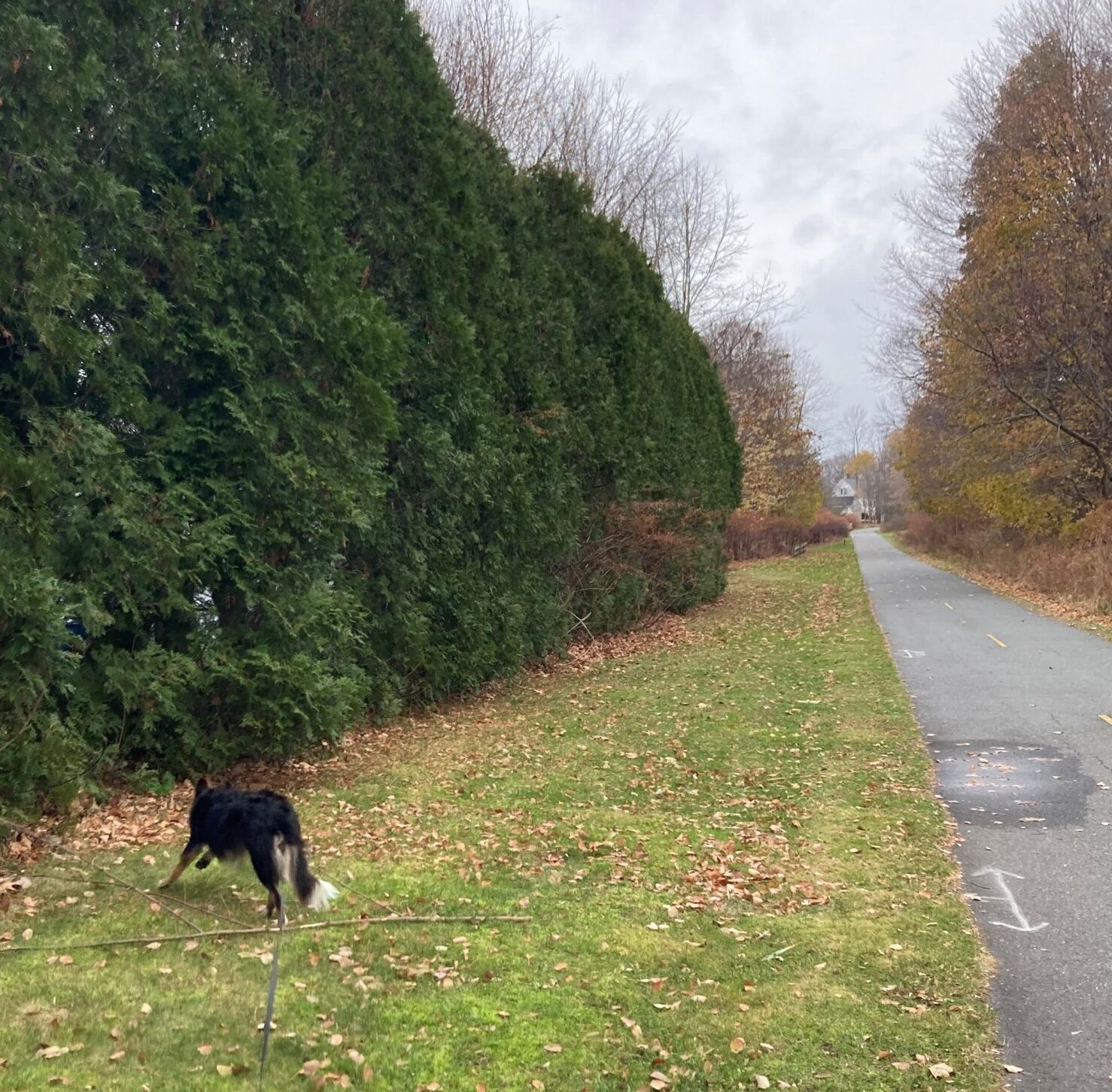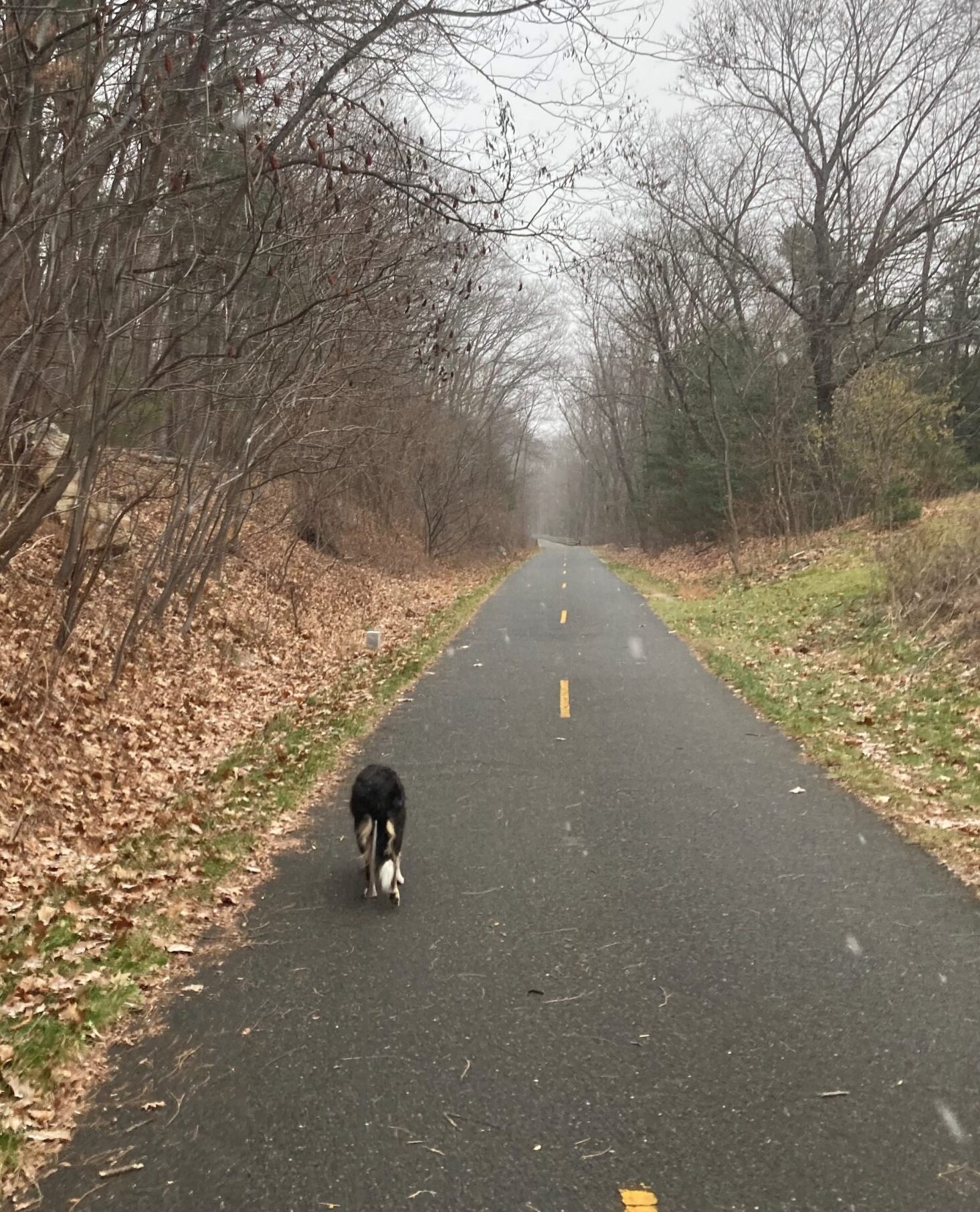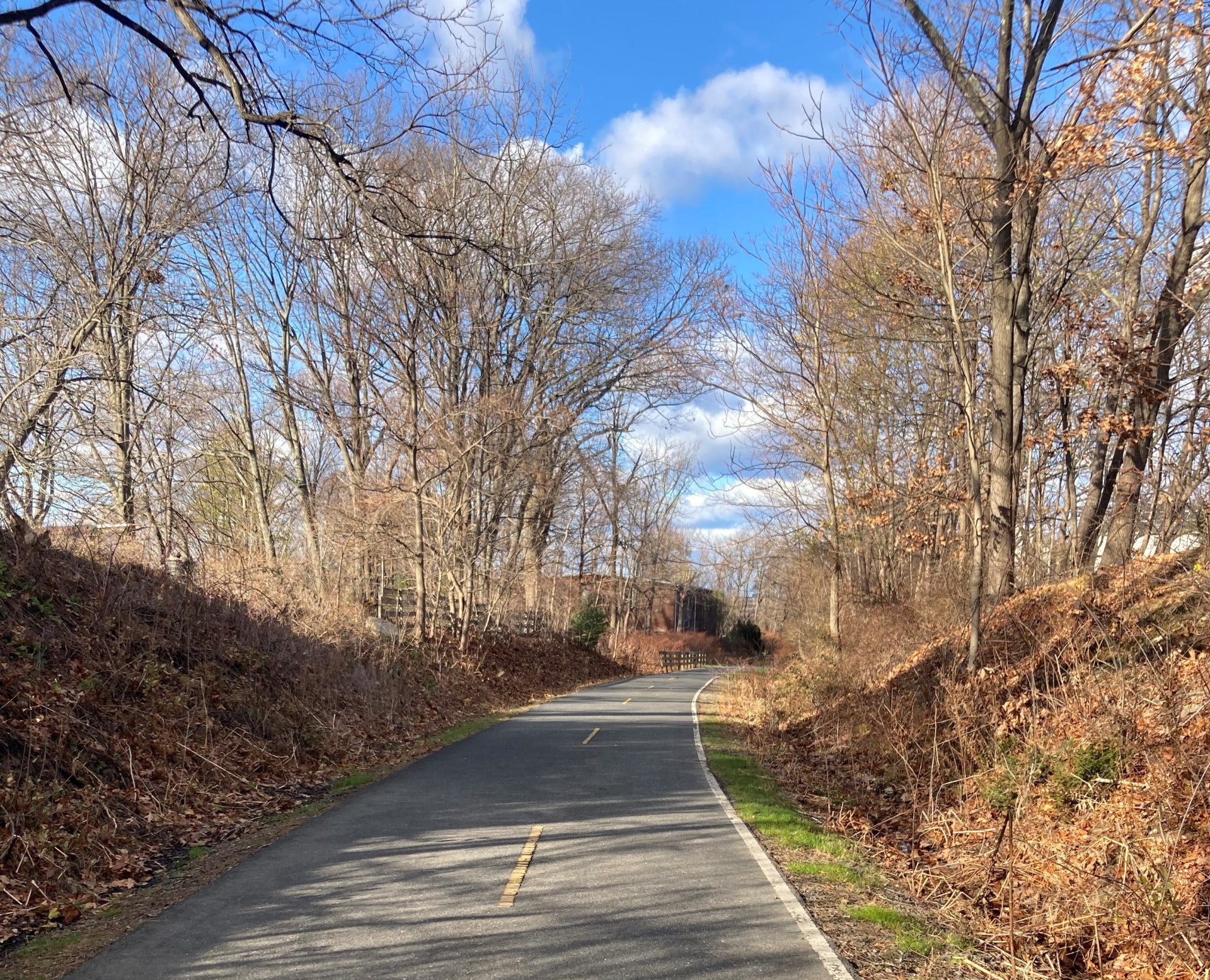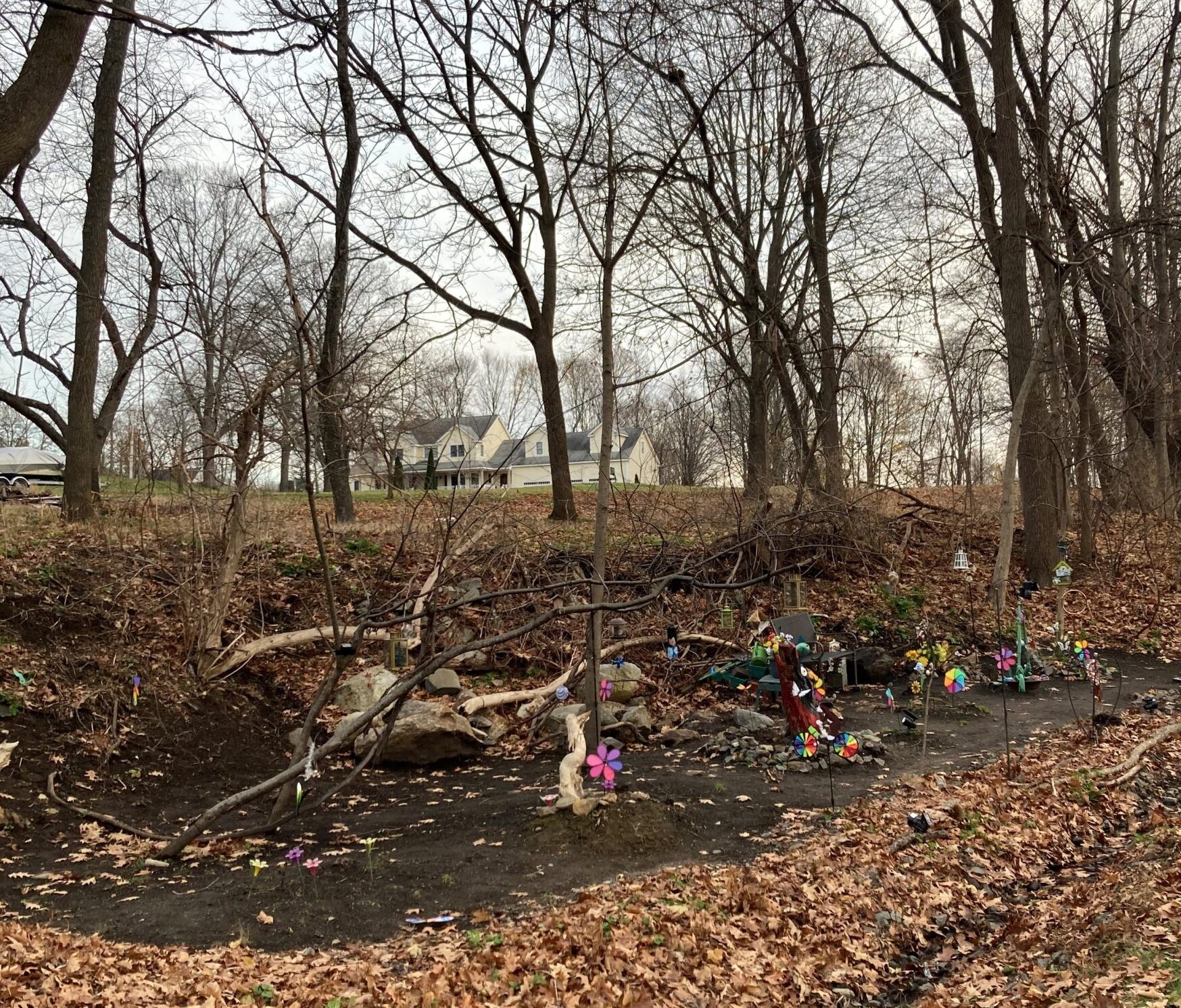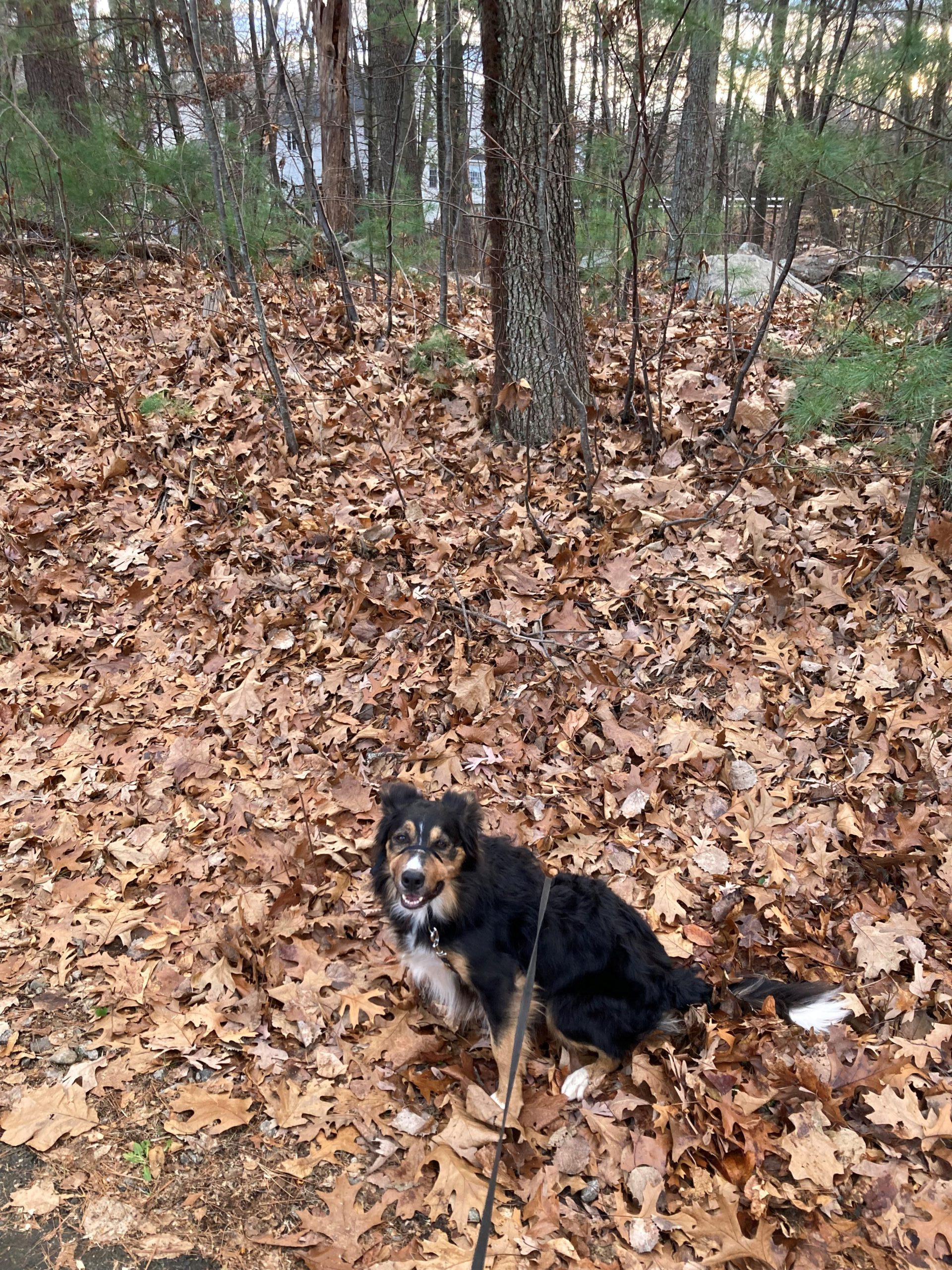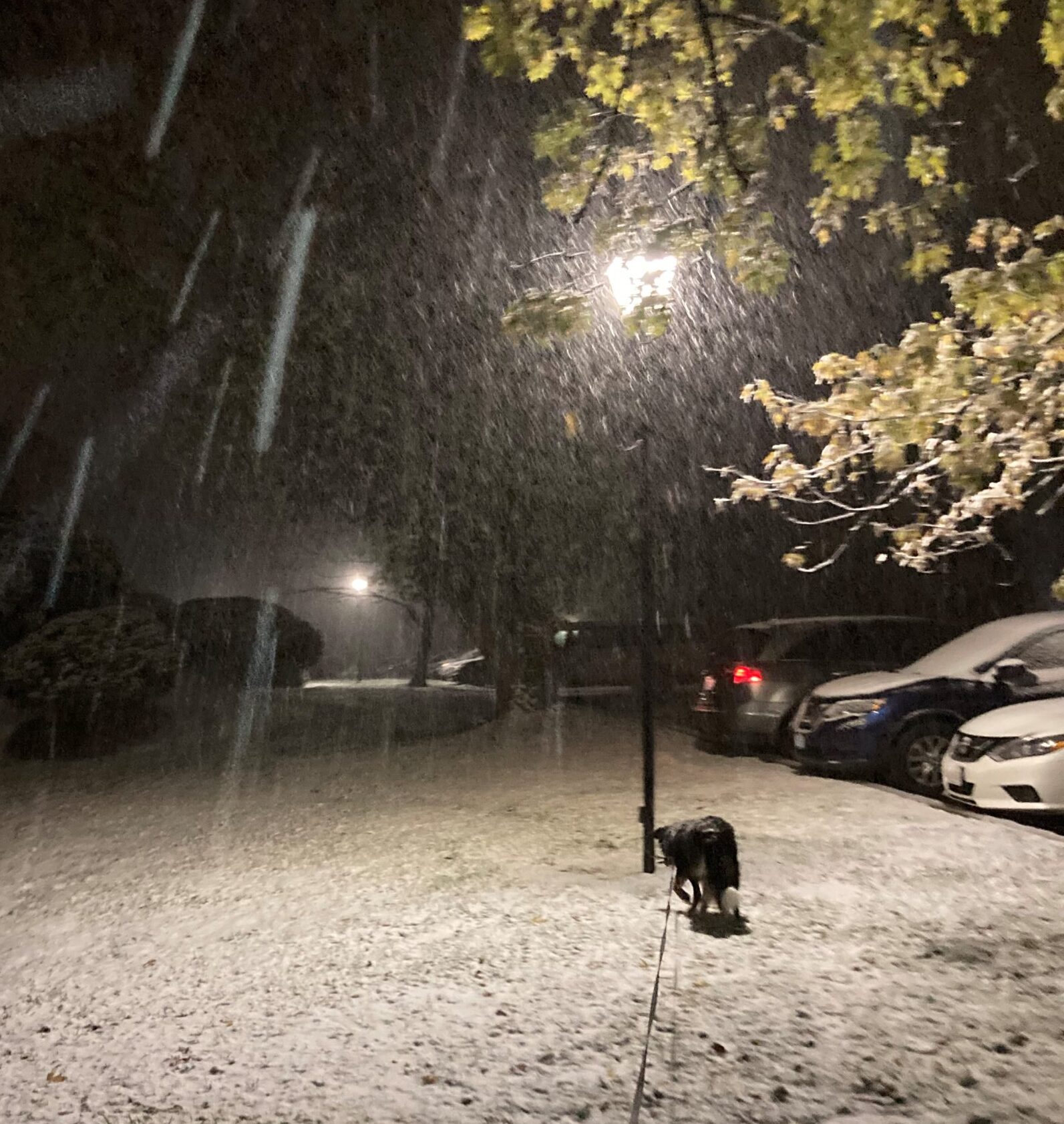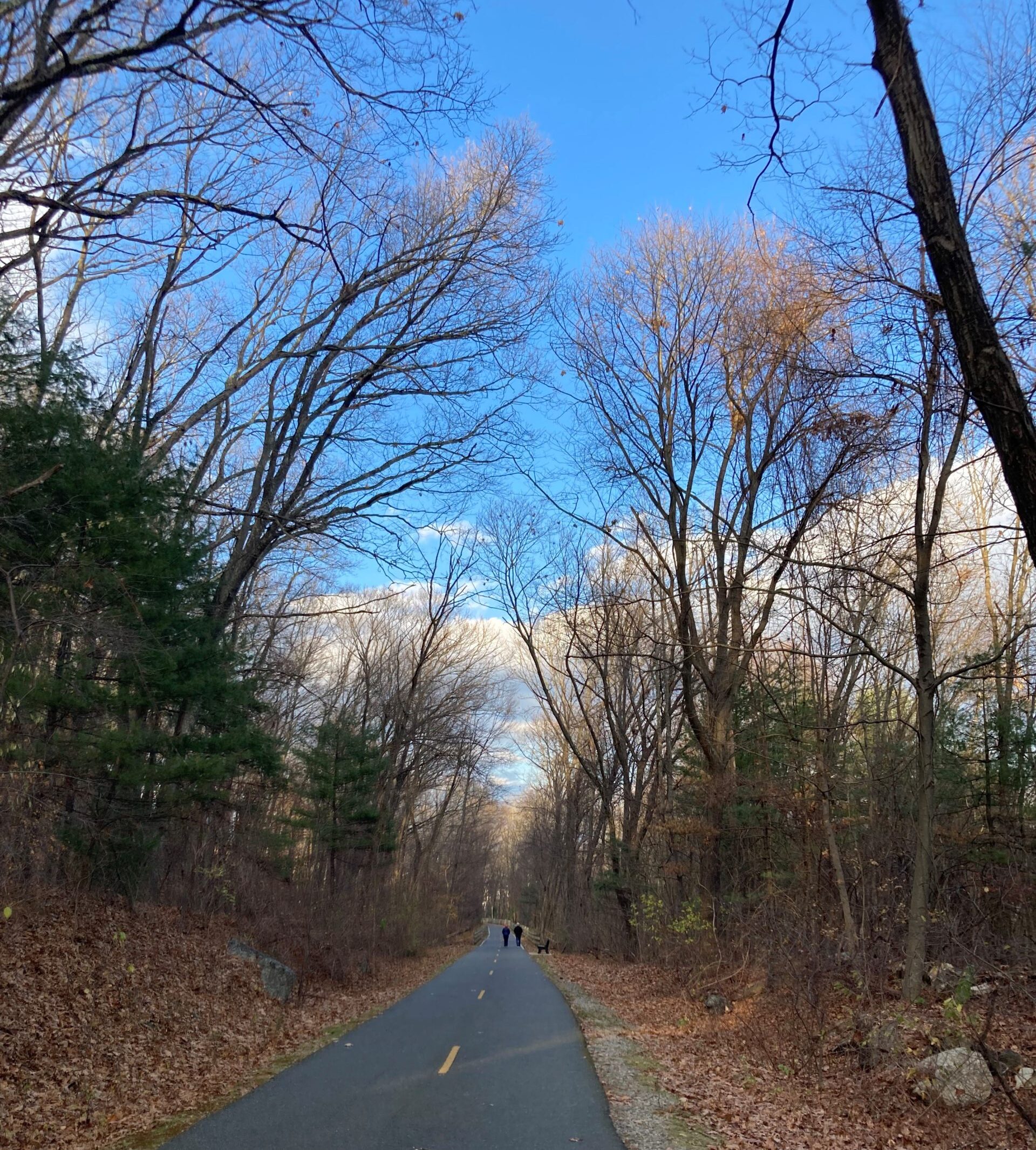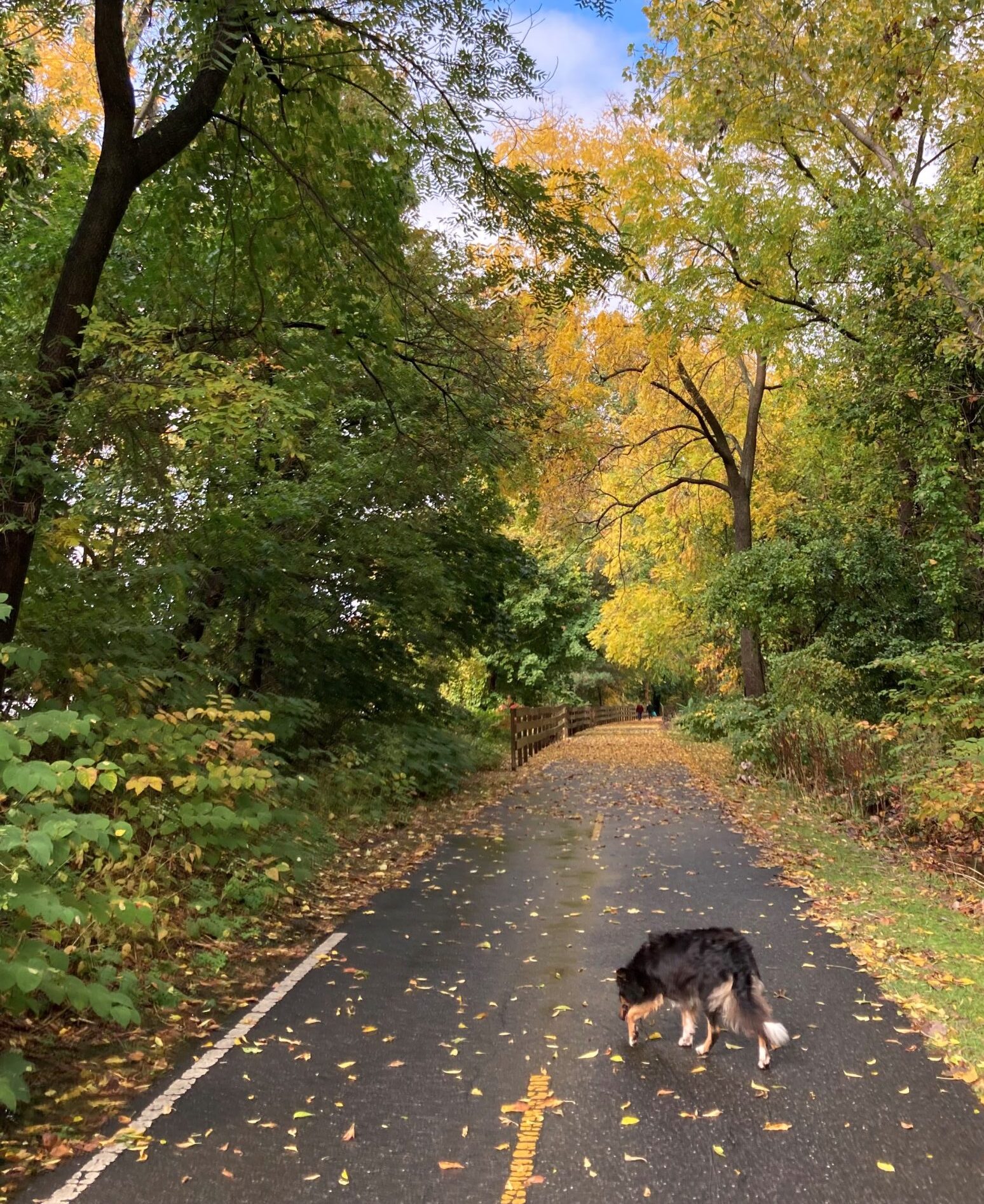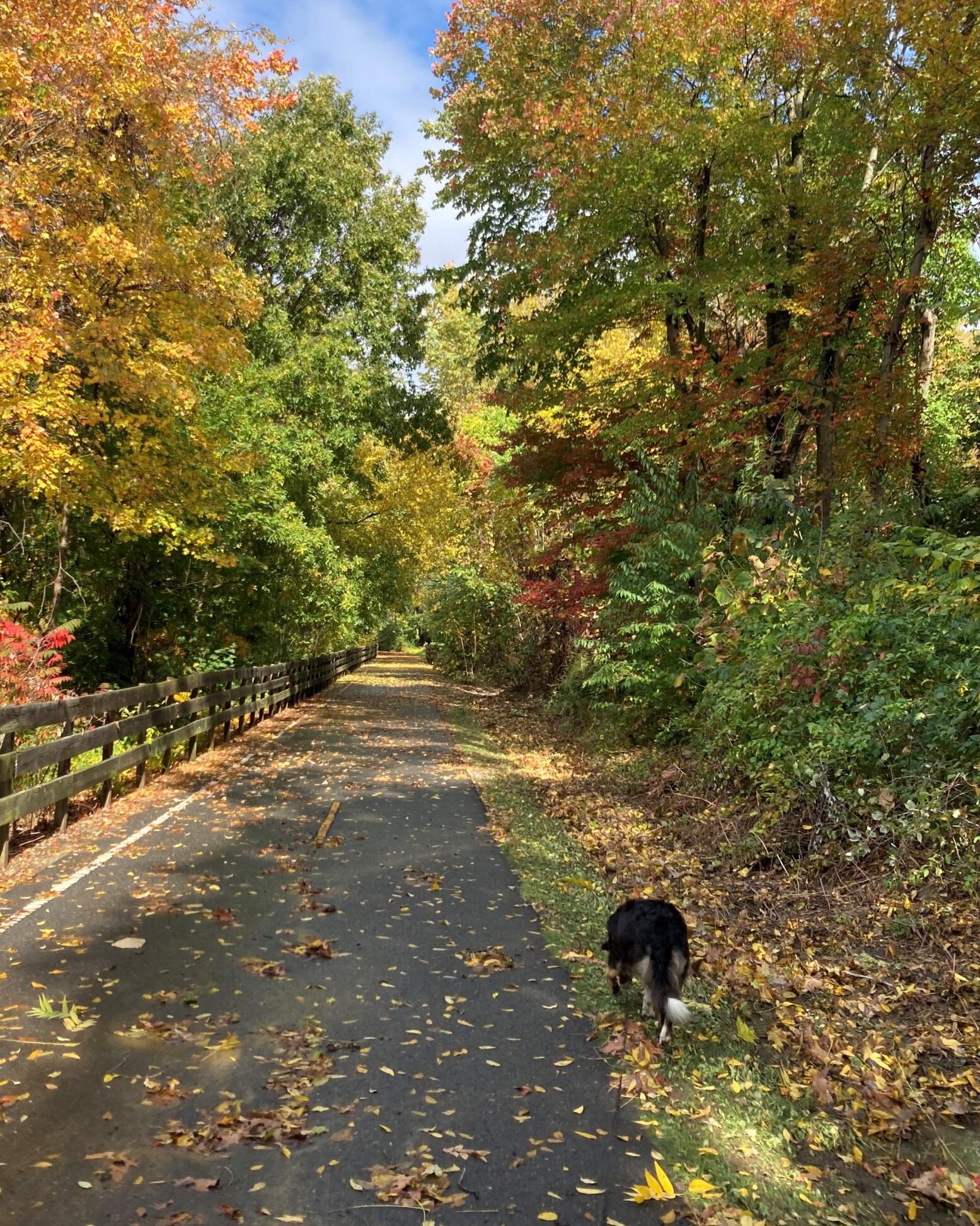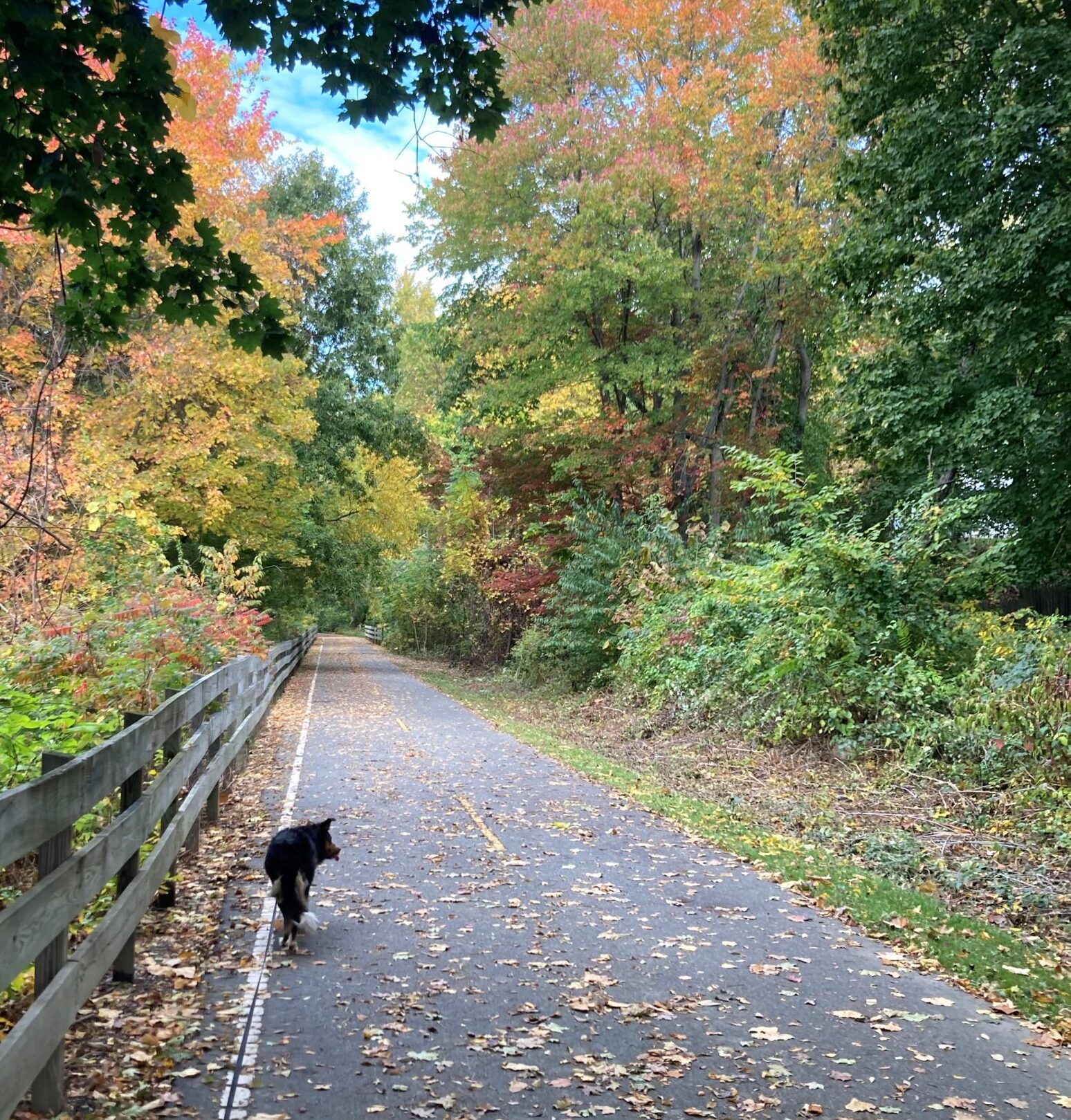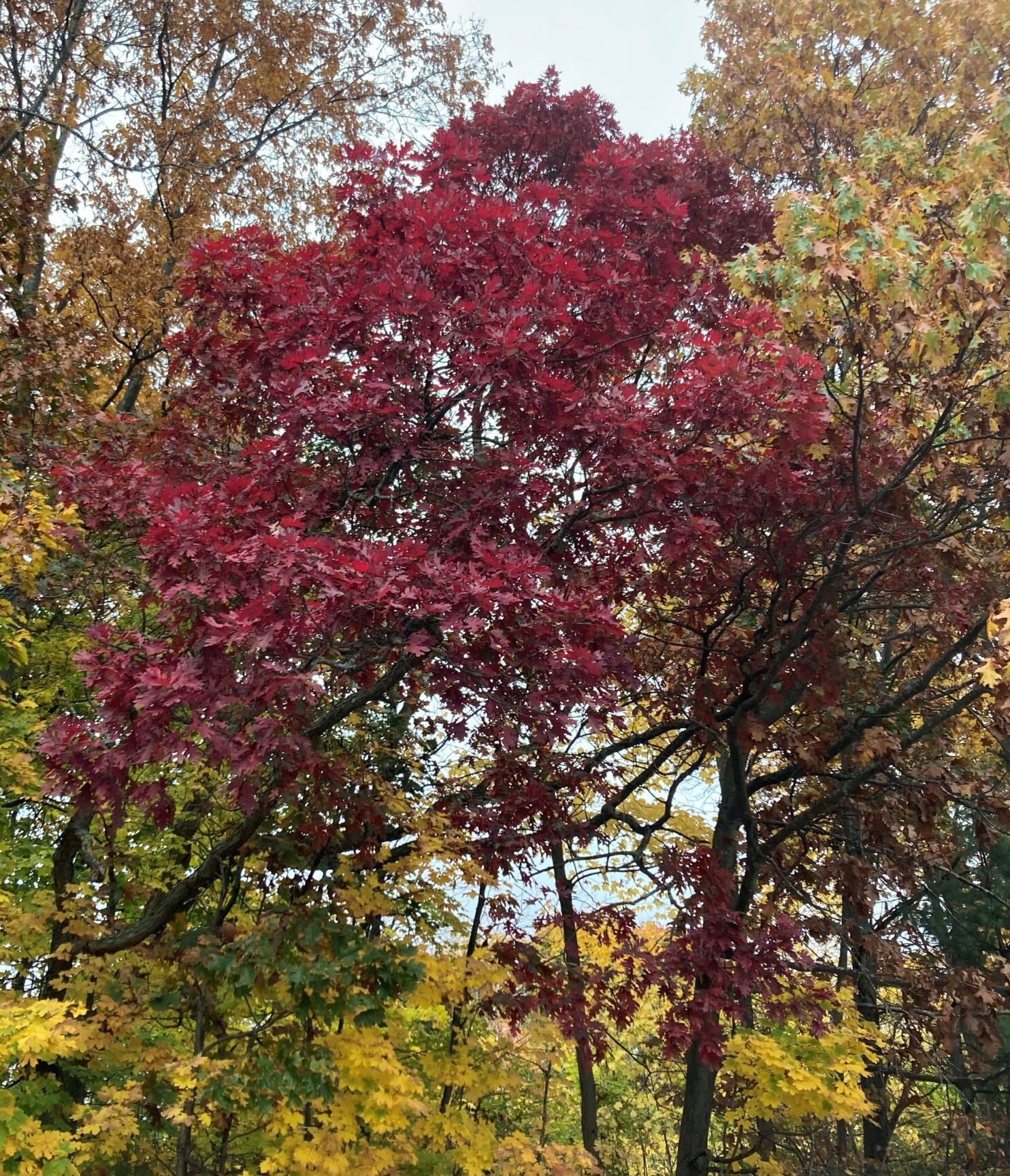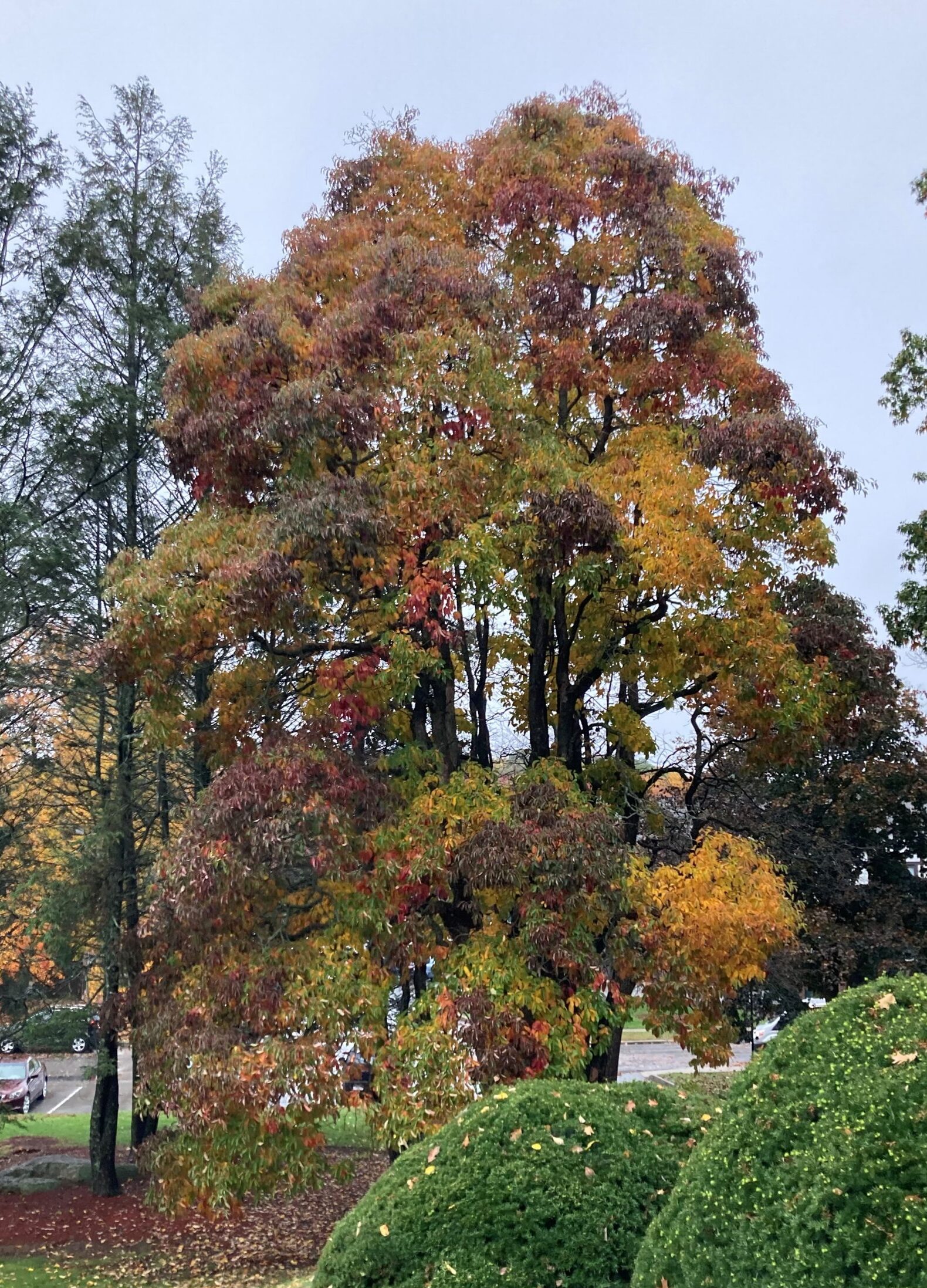Forever — is composed of Nows –
-Emily Dickinson
It’s wet and rainy today. Not the kind of rain that comes down in sheets, soaks through my boots and clouds my glasses with wind-driven beads of water that run down the lenses, but more of a light drizzle that, over the two plus hours it takes us to do our trek, gets my rainsuit thoroughly wet, but I stay relatively dry. Waldo’s hair is soaked to the skin, but he only shakes it off every half hour or so. Visibility is just slightly impaired and the temperature is in the low fifties, so it’s not cold at all. Except for the rare jogger, dog walker or dedicated exerciser out for their daily constitutional, we are alone. Tuning out the spatter of raindrops on my clothes and ignoring the sight of the constantly falling misty rain, everything is remarkably still. Insects have packed it in for the season, rabbits and squirrels are holed up somewhere dry and birds have either gone south or decided this isn’t the day to venture out for a flight. I put my gait on automatic pilot and leave Waldo to do his Waldo thing at the end of the leash. With nothing else to do, I can’t help it, my mind wanders and I’m soon thinking more about emergence.
I’m struck by an entertaining thought. If human consciousness is the emergent property of lots of interacting neurons adapting to their milieu, what would the emergent property be, let’s call it the Uber mind, of lots of people interacting with one another? I don’t think you could call this Uber a super-consciousness because that would suppose there would be significant overlap between what we experience as consciousness and what Uber experiences. I would think it would be as difficult for us to imagine what Uber’s experience is like as it would be for a neuron to guess what our awareness is like.
The emergent quality of nature, let’s call her Gaia, might have qualities that are at least as difficult for us to understand. In the movie, Avatar, the writers invented a guiding force of life, on the planet Pandora, they called Eywa. The natives, the Na’vi, could speak directly to Eywa through the Tree of Souls – a tree that they could use to get “hardwired into” Eywa. Here on Earth, we are all part of nature and we interact with all other parts of nature. Maybe if we thought of Mother Nature as Gaia, something similar to Eywa (I’m sure that was intended by the writers), the paradigm shift would be insightful. Maybe Gaia doesn’t have a human personality, or maybe she doesn’t have intelligence, the way we think of intelligence, but she does “speak” to us and we don’t need a Tree of Souls to “hear” her. All we have to do is pay attention.
I open my awareness to the world around me; today, the slanting rays of a winter sun ooze diffusely through clouds, mist and the bare branches of trees, to shine weakly on dead leaves that cover the ground. Looking at all this in an unfocused sort of way, I can get a sense of something bigger, Gaia in her entirety, rather than my usual narrow perception of nature being merely a collection of trees, bushes and so on. Gaia “speaks” to me as obliquely and indirectly as the winter sun shines on the ground. If I’m willing to still my constantly running mind and my never-ending internal dialog, and just listen, look, feel, taste, and smell what’s happening in the moment, I can sense how she affects me. I feel a cold breeze chill and numb my face, see the tan and beige sleeping forest and fields with their skeletal dormant remains, listen to the droplets of drizzle hit my rainsuit, smell the musty, rotting dead leaves at my feet and I react to it all. My reactions are more feelings than thoughts, something precognitive, yet profoundly moving. The texture of what I experience is constantly shifting, flowing, like a river. It’s nuanced and subtle, yet prolific and deep. If I dwell there, in the world of how I feel being emersed in Gaia, rather than run away to somewhere more intellectual, I learn something important from what she “tells” me. Something that cannot be expressed in language because it is precognitive, yet has a profound impact on my experience.
Waldo breaks my reverie with a gentle tug on the leash. We’re almost back to the car. I turn to him and report, “Well done, Waldo. Another day, another six miles.” He wags his tail and makes for the car and home. Uber or no, Gaia or no, we are here on the rail-trail.
Being aware of that is what’s most important.


